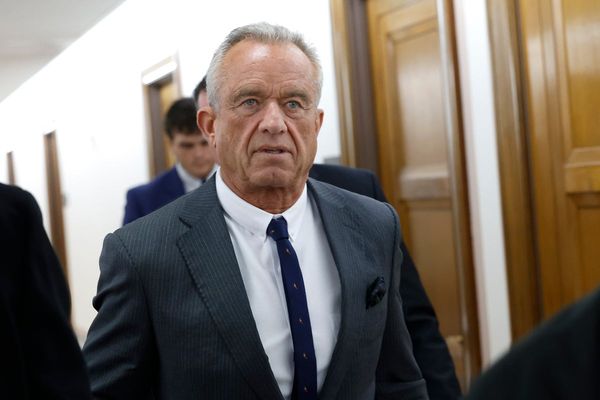
Last week, Iranian Attorney General Mohammad Jafar Montazeri announced that the Guidance Patrol, widely known as the Morality Police because it enforces the Islamic Republic’s laws on personal behavior and dress, will be suspended. Though Montazeri quickly added that the judiciary will continue to monitor public conduct, the announcement is a clear acknowledgment of the toll that the demonstrations have taken on the regime since September, when the death in Guidance Patrol custody of a 22-year-old Kurdish Iranian woman, Mahsa Amini, led to widespread protests.
In the typical fashion of senior Iranian officials, Montazeri was vague and did not make clear whether the supreme leader, Ayatollah Ali Khamenei, has approved the decision. Nor did he disclose what will happen to women who appear in public without the mandatory hijab, or headscarf. Iran’s state television channel has since denied the announcement. Still, the protesters are buoyed by the news, though they remain unappeased—buoyed because this is a small victory, but unappeased because disbanding the Guidance Patrol, if that proves to be the case, is only the beginning for them. In an interview with the BBC, one unnamed protester said, “A revolution is what we have. Hijab was the start of it, and we don’t want … anything less but death for the dictator and a regime change.”
The regime knows this. The many elders of the Islamic Republic learned long ago—from the fate of the preceding regime, in fact—that to concede to protesters is to reveal vulnerability. In January 1979, Iran’s last king, Shah Mohammad Reza Pahlavi, tried to quell the dissent he faced by appointing as prime minister Shapur Bakhtiar, a reformist whom some close allies of Ayatollah Ruhollah Khomeini, the de facto leader of the movement to depose the shah, regarded highly. But Khomeini immediately rejected the move, calling the new prime minister and his government illegitimate and vowing that the movement would go on until the monarchy had been dismantled.
The regime also knows that, even if it was capable of reform, it has missed the opportunity for it. The 2009 Green Movement was the theocrats’ last, best chance. Back then, the protesters were asking “Where is my vote?” because they still had hope in bringing about change by electing a potential reformist, Mir Hossein Moussavi, from among the supreme leader’s approved candidates. But the rigged election followed by a violent crackdown proved that the system was too recalcitrant.
The regime knows, too, that of all the many protests that have swept through Iran in the past four decades, this latest round is very different. No other uprising has been as widespread or endured as long, and until now, none had ever challenged the very foundation of the regime itself. This time, Iran appears once more to be on the threshold of a revolution because it can neither subdue the discontented nor meet their demands. Even though the regime has killed more than 400 of its own citizens and detained some 16,000, the movement has not been quelled. Faced with the failure of repression, the regime appears to be offering a concession by withdrawing the Guidance Patrol. But why such a concession, if the clerics know the example of the shah’s attempt to mollify protesters? Perhaps the better question is: Whom is it for?
Inside Iran, the protesters have dismissed the news and have begun a three-day nationwide strike. Numerous shops and bazaars were closed this week in solidarity with the protesters. So the concession must be a signal to the outside world, above all the United States. Despite the regime’s anti-Western bluster, it has always staged much of its political theater for American consumption; in the absence of diplomatic relations, this is how it attempts to send a message to and influence Washington. Tehran is reacting, therefore, to the way it believes the U.S. views the events of the past three months.
From the start, many in Washington have underestimated or downplayed the seriousness and scale of the protest movement. There have been protests in every corner of Iran, not just in provinces with large, disaffected ethnic-minority populations, such as Baluchistan and Kurdistan, but also in the heavily conservative city of Qom, and in Khomein, the city where Ayatollah Khomeini was born—and where protesters recently set fire to his former residence. As might be expected, university professors have refused to teach and their students have conducted sit-ins, but even members of the most conservative, merchant class, the bazaaris, recently closed their businesses to honor the memory of 2019’s Bloody November, a week-long nationwide uprising during which the riot police shot dead hundreds of demonstrators.
Yet U.S. officials and many opinion formers tend to foreground the role of “women and girls” in the current movement—as though the imposition of the female Islamic dress code were all the protest has been about, even while the demonstrators chant “Death to the dictator!” and untranslatable expletives about the supreme leader. The special envoy for Iran, Robert Malley, tweeted in October that the Iranian people “continue to peacefully demonstrate for their government to respect their dignity and human rights,” and the State Department’s spokesperson, Ned Price, declared the Biden administration’s support for “those brave Iranians, including many women and girls, who are peacefully demonstrating to call for reforms.” The protesters have not asked for any such thing. Their mantra is that the hijab issue was merely the spark—“The regime’s very core is our target,” they cry.
Turning to the West, Tehran judges, is its best hope of weathering the crisis. The regime is under both severe internal and external pressure. A recent vote at the United Nations Human Rights Council will establish a special commission to investigate the violence against the protesters. Rifts within the Iranian military recently led to the arrest of 115 disaffected personnel, according to leaked documents. Iran’s support for Russia’s war in Ukraine, despite Moscow’s worsening difficulties, has further frayed Tehran’s relations with the West. Facing this deteriorating situation on so many fronts, the regime hopes to improve its fortunes by showing that it’s capable of change. Through easing a few restrictions, Tehran wishes to convince Washington that it has addressed the demands of the demonstrators, so that the U.S. and the European Union might soften their stance and possibly resume nuclear negotiations.
Washington has a long record of misreading events in Iran. On the eve of 1978, only weeks before the outbreak of mass demonstrations in the country, President Jimmy Carter toasted the shah and praised the stability of his rule. And the U.S. persisted in that wishful misrecognition long into the monarch’s last year, banking on his ability to retain power. Given that precedent, Tehran’s calculations today could prove shrewd.
Hours after Montazeri’s announcement, Secretary of State Antony Blinken responded to a question about the disbandment of the Guidance Patrol by praising the courage of the protesters and saying, in a qualified way, that “if the regime has now responded in some fashion to those protests, that could be a positive thing.” As long as America’s leaders fail to recognize that the movement in Iran is about more than a revolt against a restrictive dress code, Tehran knows it can manipulate the U.S. into not responding with due seriousness.
The tragedy in 1979 was that the U.S. didn’t see the change coming that made life in Iran, and across the region, much worse. The tragedy in 2022 will be if the U.S. doesn’t see the change coming that can make life in Iran, and across the region, much better.







